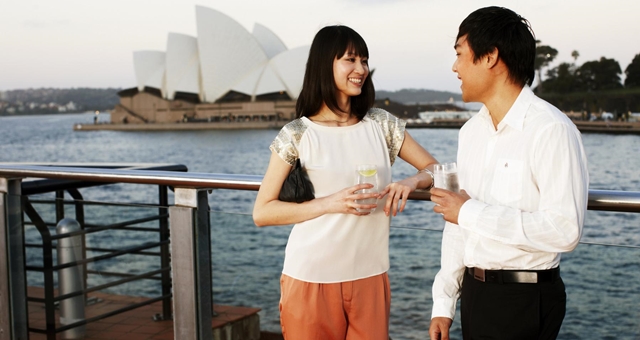The sixth annual Chinese International Travel Monitor (CITM) released by Hotels.com has revealed that Chinese travellers are spending a whopping 28 per cent of their income on average on international travel. They also intend to spend 10 per cent more on travel in the next 12 months, with Australia topping the list as the most desired destination in Asia-Pacific.
Regardless of many key indicators showing signs of a slowdown in the Chinese economy, this year’s CITM found spending on travel increased across all age brackets, with Chinese travellers spending US$3,600 in the last 12 months – more than a quarter of their income and an increase of 4 per cent compared with the previous year. 90s millennials are the biggest spenders, allocating 35 per cent of their income to travel.
93 per cent of Australian hoteliers surveyed in the Hotels.com research said they accommodated Chinese travellers, with 55 per cent observing growth of the market over the last 12 months. According to the Hotels.com data, Australia was deemed the third most welcoming country to Chinese travellers, up one place from 2016.
Despite this, the Hotels.com report revealed a gap in what Chinese guests want versus what hotels are providing, highlighting that, by making some adaptions to accommodate Chinese tourists, there is huge potential for Australian hotels to further tap into this market.
While Australian hotels are focusing their efforts on social media and marketing programs in a bid to attract Chinese travellers, the investment in on-site services for Chinese guests has decreased according to the Hotels.com data, with only 5 per cent spending more than US$10,000.
The report identified key areas where hotels could improve their services, according to Chinese travellers:
-Chinese payment facilities at hotels, such as UnionPay, rank second for consumers in importance, yet only 18 per cent of AU hotels currently offer these facilities. Indeed, only 15 per cent intend to offer them in the next 12 months;
-In-house Mandarin speaking staff was ranked number one by travellers but was low on the list for hoteliers, with only 16 per cent currently offering the service and 11 per cent planning to in the next 12 months’
-On-site Chinese restaurants were ranked fifth by travellers however only 3 per cent of hoteliers currently offer this service. Only 5 per cent intend to provide it in the next 12 months; and
-Translated travel guides were ranked number four by travellers but are a low in priority for hoteliers; 14 per cent currently offer this and only 17 per cent plan to in future.
The Hotels.com survey reported all age groups traveling more often and for longer, with the number of trips and number of days per trip increasing in the past year from 3 to 4 and from 5 to 7 days, respectively. Chinese travellers are also visiting multiple cities per trip, with over 80 per cent saying they would not just stay in a single city.
The average amount spent per day also increased – up 8 per cent from 2016 – with dining, sightseeing and rest and relaxation activities proving most popular. Interestingly, shopping took a dive from last year – dropping from 68 per cent in 2016 to 33 per cent in 2017, and indicating the increasing diversification of Chinese travel preferences.
Independent travel, including backpacking, is well and truly in for this increasingly discerning, experience-hungry group of travellers, with 50 per cent saying they are interested in this type of travel. Only 37 per cent said they will take part in group tours in the future, according to the research.


